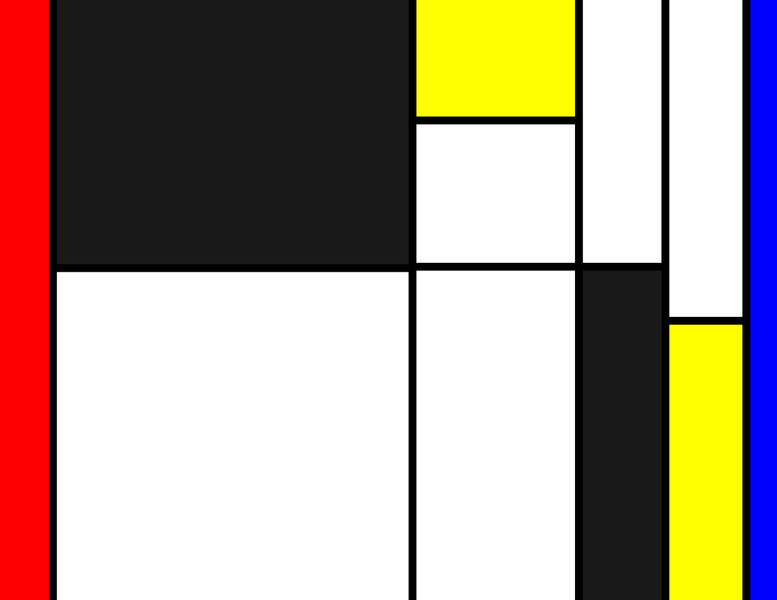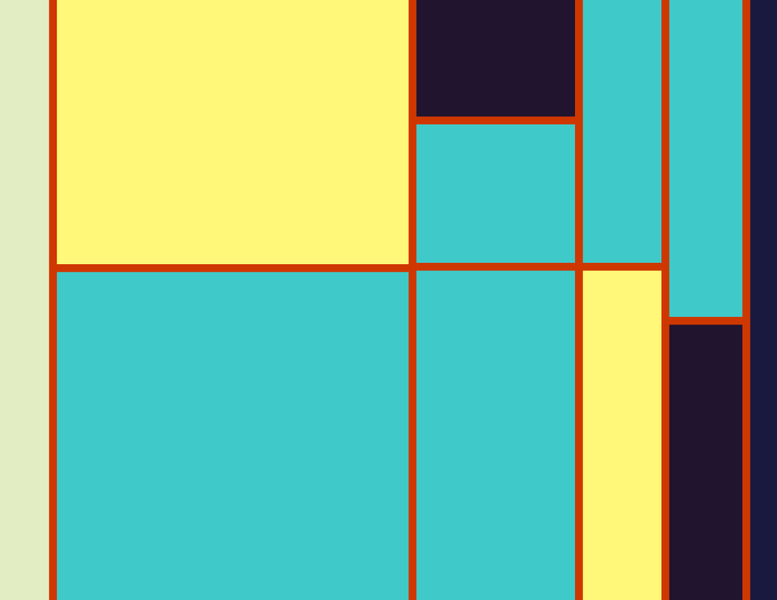
This art project is a lesson in working with and breaking constraints.
In art, a constraint means something that you can't do, or something that you can only do a certain way. If you are very creative within constraints they can paradoxically be a source of great inventiveness.
The source of our constraints are the neoplastic style invented by Piet Mondrian. The following neoplastic work, created mostly by a computer program, follows neoplastic rules.

YDMQ7LRBNV3C8L, generated and randomly named by the computer script DeStijl.py
These are the rules:
Also, ignore people who say that this is not art, and that this is boring. If you think this is boring, how about breaking a rule to make it more interesting?
Let's break the rule that you can only use red, blue, yellow. Instead, use any colors you want! I suggest that you still limit yourself to only a few colors (as a constraint) and try to make it interesting.
How does this work change if I alter it to use some favorite colors of mine? It changes very well, in my opinion:

YDMQ7LRBNV3C8L, modified with some favorite colors of RAH
You can make your own grid "from scratch," or use any of the grids from the following pdfs; print a random page from them:
--then fill in the rectangles with watercolor, tempera, acrylic, or anything you like. You could take it further than only solid color fills, too! You could do color gradients, or spatter or drip painting, or doodle decorative lines over the trace borders, rings of marker color, scribbles of crayon, or have decorative lines wander into the rectangles, or put stickers on the result--or forget conventions altogether and turn it into a nonlinear comic with a plot that nobody can decipher--break the rules! Have fun with it!
Here are some color scheme random fills of these grids to start your imagination.
I don't know whether any art historian or professor calls something like neoplasticism but different post-neoplasticism (and frankly I don't care), but I do. This is post-neoplasticism. It takes neoplasticism and makes it something else.
Here is a link to the computer script that created these neoplastic grids. If you want to use it you may need to figure out how to.
Back to site index